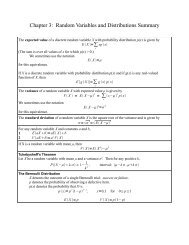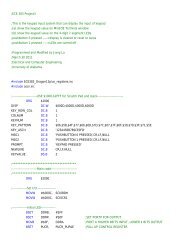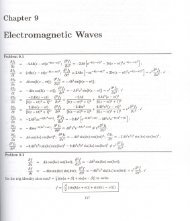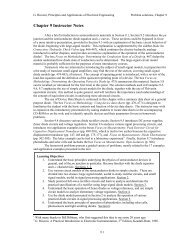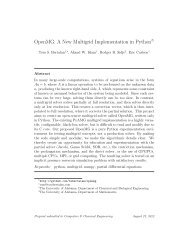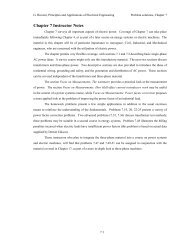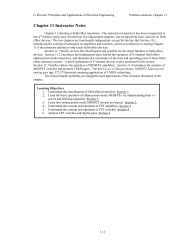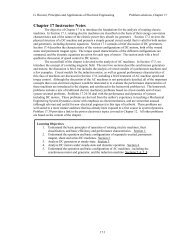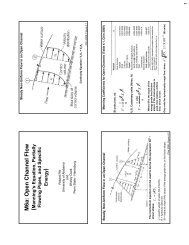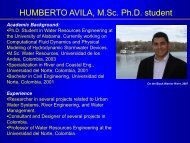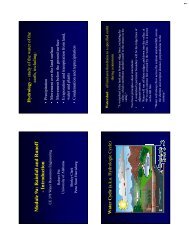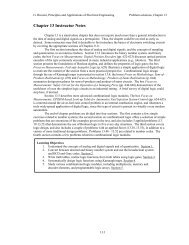ECE-320 CH02.pdf - Unix.eng.ua.edu
ECE-320 CH02.pdf - Unix.eng.ua.edu
ECE-320 CH02.pdf - Unix.eng.ua.edu
- No tags were found...
Create successful ePaper yourself
Turn your PDF publications into a flip-book with our unique Google optimized e-Paper software.
G. Rizzoni, Principles and Applications of Electrical Engineering Problem solutions, Chapter 2R02R = → ∞2 when I − R0 AkI → 01−R AkI01 1m ° C V −2I = = (0.7 0.35 0.11 ) =6.09 a.AkR ° C Va a0________________________________________________________________________Solution:Problem 2.31Known q<strong>ua</strong>ntities:Circuit shown in Figure P2.31 with voltage source,R .= 20Ω,R2= 40Ω,R3= 10Ω,R4= R5=6= 15Ω1RFind:The current in the 15-Ω resistors.Analysis:Since the 3 resistors must have eq<strong>ua</strong>l currents,and,I 15 ΩI =R1= ⋅ I31+ R210I 15=VS|| R + R34|| R5|| R6V s= 10Vand resistors,10 10= = = 30<strong>320</strong> + 8 + 5 33Therefore,Ω= 101 mA99________________________________________________________________________Solution:Problem 2.32Known q<strong>ua</strong>ntities:Schematic of the circuit in Figure P2.7 with currents −2V S= 12 V, and resistance = 2 ΩFind:R 0.The unknown resistances R1, R2, R3, R4and R5.I 0mA= A, = −4A, I S= 8I 1A, voltage sourceAssumption:In order to solve the problem we need to make further assumptions on the value of the resistors. For23example, we may assume that1R4= R and2R11R = .3Analysis:We can express each current in terms of the adjacent node voltages:2.24



